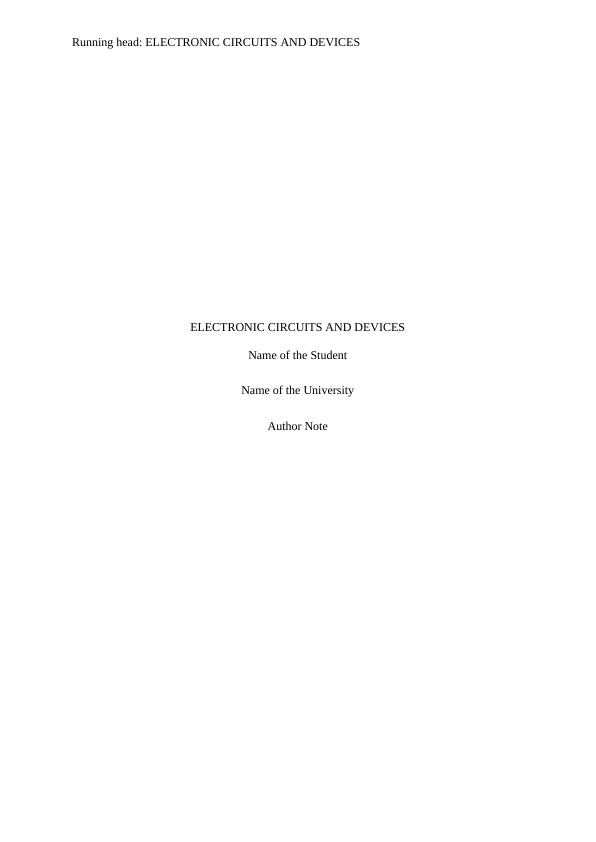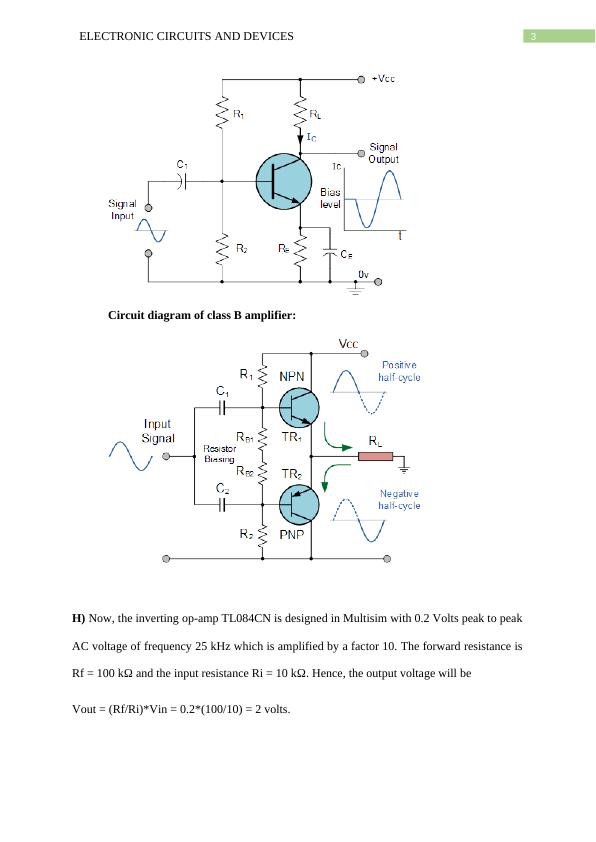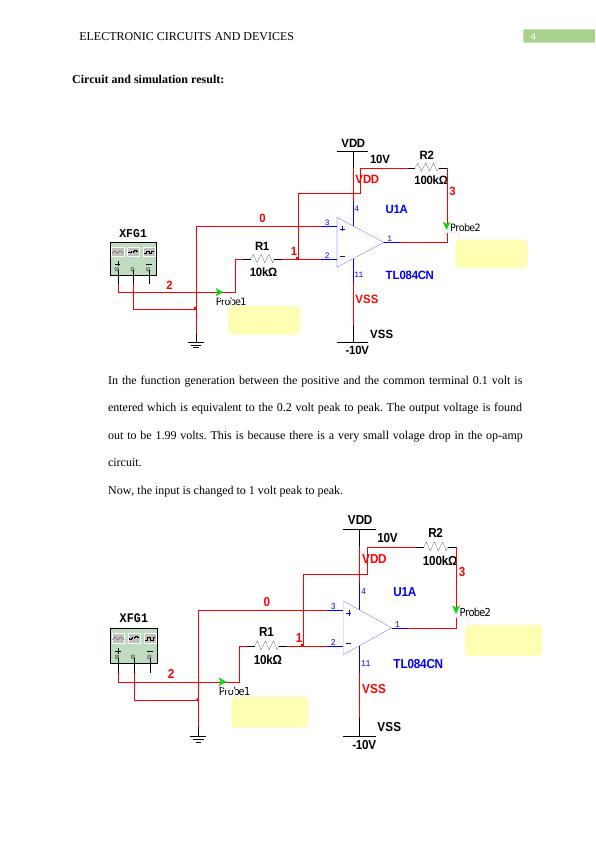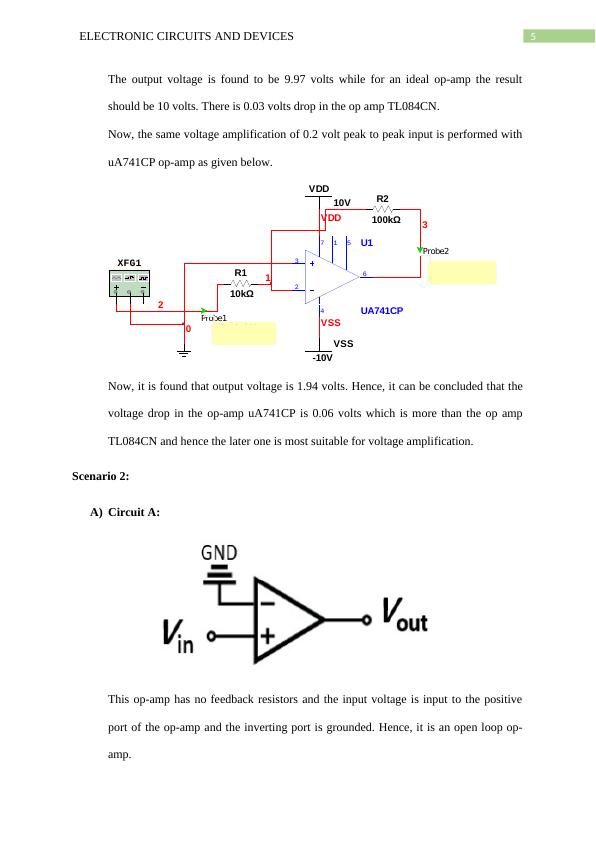Electronic Circuits and Devices: Operational Amplifiers, Feedback Circuits, and Oscillators
This assignment is about amplifier circuits and applications in the field of electronic circuits and devices. The assignment requires the students to determine the operational characteristics of amplifier circuits, investigate the types and effects of feedback on an amplifier's performance, and examine the operation and application of oscillators. The assignment should be submitted in the form of a report, showing all work in a neat and organized manner. The experimental part of the assignment requires students to reserve lab time with Eng. Nadia ahead of time to complete tests.
Added on 2023-04-22
About This Document
Electronic Circuits and Devices: Operational Amplifiers, Feedback Circuits, and Oscillators
This assignment is about amplifier circuits and applications in the field of electronic circuits and devices. The assignment requires the students to determine the operational characteristics of amplifier circuits, investigate the types and effects of feedback on an amplifier's performance, and examine the operation and application of oscillators. The assignment should be submitted in the form of a report, showing all work in a neat and organized manner. The experimental part of the assignment requires students to reserve lab time with Eng. Nadia ahead of time to complete tests.
Added on 2023-04-22
End of preview
Want to access all the pages? Upload your documents or become a member.






